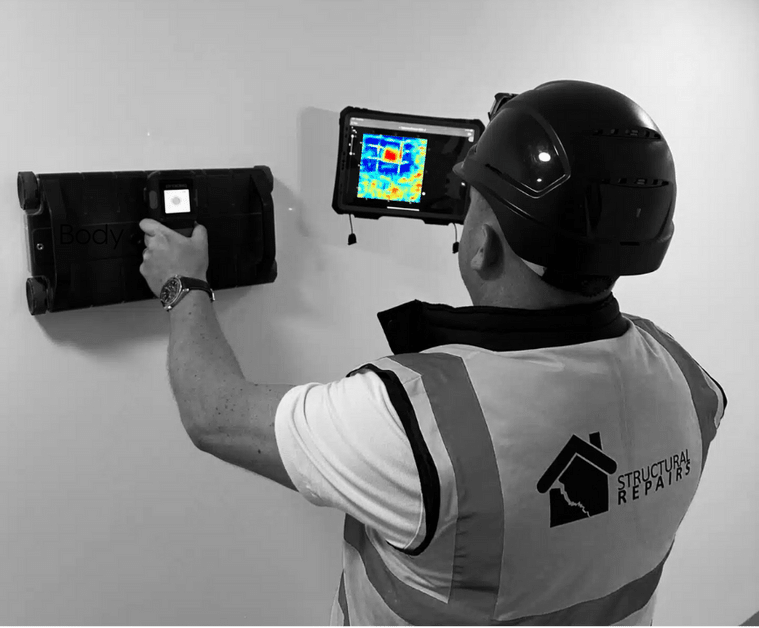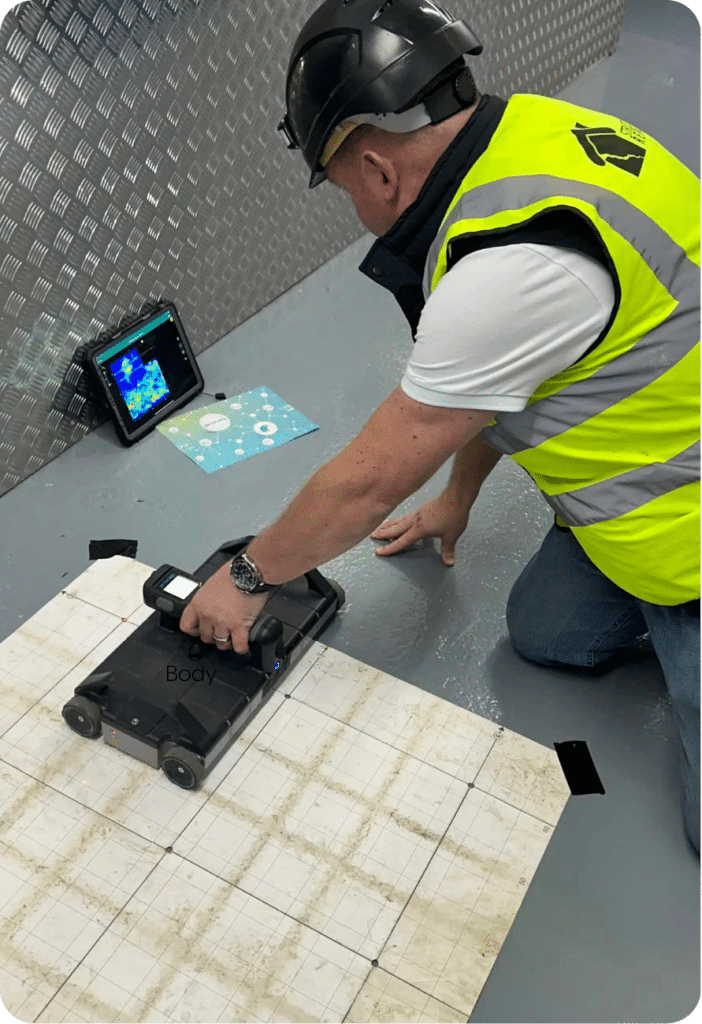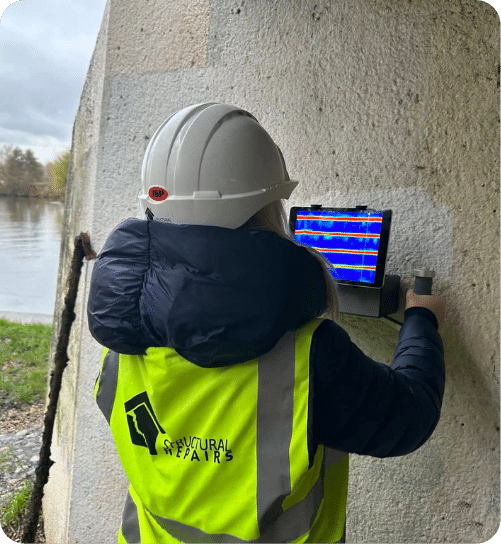Discover How Our Expert Concrete
Scanning Services Ensure the Longevity
and Safety of Your Concrete Assets
Discover How Our Expert Concrete Scanning Services Ensure the Longevity and Safety of Your Concrete Assets
Without risking costly repairs or project delays.
A smart investment for your peace of mind.
Trusted contractor for:
What is concrete scanning?

Understanding concrete scanning
Concrete scanning is an advanced non-intrusive method that reveals what lies beneath the surface of concrete structures.
Utilising cutting-edge technologies like Ground Penetrating Radar (GPR), we can visualise subsurface elements and assess their condition without causing damage.
Key functions:
#1
Identify Hidden Structures:
Accurately locate reinforcing bars, conduits, and pipes embedded within concrete.
#2
Assess Material Conditions:
Identify issues such as voids, cracks, and corrosion that could compromise structural integrity.
#3
Detect Anomalies:
Evaluate the state of concrete and other sub-ground elements to prevent potential failures.
NOT just ‘another’ service
We DON’T rely on outdated methods... we use cutting-edge technology.
Modern
solutions:
Our concrete
scanning experts go
beyond traditional
methods to deliver
exceptional results.
Our concrete scanning experts go
beyond traditional methods to deliver
exceptional results.

Get insights,
not assumptions:
Understanding what's beneath the
surface is essential for maintaining safety and integrity in engineering projects.
Understanding what's
beneath the surface is
essential for maintaining
safety and integrity in
engineering projects.

Join a
trusted network:
We work with renowned organisations like IHG, Network Rail, and Thames Water to ensure quality and reliability.
We work with renowned
organisations like IHG,
Network Rail, and Thames
Water to ensure quality and
reliability.
Why Structural Repairs?
Fix Customers Problems
A Complete Solution
Enhance Your Reputation
Understanding concrete
scanning capabilities
Our concrete scanning services can detect:


Subsurface elements: Pipes, wires, and
other embedded materials.

Material changes: Variations in concrete properties across various environments, including rock, clay, and more.

Material changes: Variations in concrete properties across various environments, including rock, clay, and more.

Subsurface elements: Pipes, wires, and
other embedded materials.

Structural anomalies: Voids, cracks, and
corrosion indicators.

Material changes: Variations in concrete properties across various environments, including rock, clay, and more.
Stay proactive – understand the condition of your concrete assets before issues arise.

The benefits of concrete scanning & the advantages of partnering with us...
The benefits of concrete scanning &
the advantages of partnering with us...

Why concrete
scanning is essential
For renovation and safety: Whether you are cutting or coring concrete, understanding what lies beneath is critical to ensuring safety and structural reliability.
Preventative maintenance: Don’t wait for issues to arise—invest in proactive scanning to extend the life of your concrete structures.
Streamlined process: Our non-intrusive approach means minimal disruption while providing maximal insight.

As featured in:
With an array of renowned buildings successfully repaired by our team and forming part of our portfolio, we have proudly been featured in both local and national media channels such as:
With an array of renowned buildings successfully repaired by our team and forming part of our
portfolio, we have proudly been featured in both local and national media channels such as:

Frequently Asked Questions
Find answers to the most frequently asked questions on concrete scanning
Concrete scanning is a non-intrusive method that uses advanced technology, like Ground Penetrating Radar (GPR), to identify and assess what lies beneath the surface of concrete structures.
Concrete scanning helps prevent accidents, saves costly repairs, and ensures that your construction or renovation activities don’t disrupt hidden structures or utilities.
Our scanning can identify rebar, pipes, electrical conduits, voids, cracks, and other anomalies within concrete and related materials.
Concrete scanning involves using specialized equipment that sends radar waves into the concrete. These waves reflect back information, which is then interpreted by our trained specialists.
Yes, concrete scanning is a non-invasive and safe method that does not cause any disruption or damage to the concrete being scanned.
The duration of the scanning process can vary depending on the size and complexity of the project, but most scans can be completed within a few hours.
Yes, following the scan, we provide a comprehensive report detailing our findings and any recommendations for maintenance or repairs.
Absolutely! In addition to concrete, our scanning methods can also be applied to materials like rock, clay, sand, and asphalt.
It’s advisable to conduct concrete scanning during renovation projects, before making any modifications to a structure, or as part of a regular maintenance schedule to monitor the condition of your assets.
You can easily schedule a consultation by contacting us via our website or giving us a call. Our team is here to assist you with your specific needs and questions.
